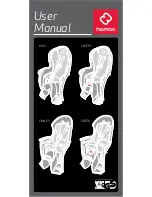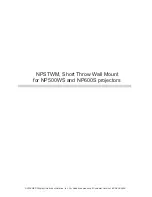
CAUTION: Use only new, black iron or
steel pipe. Internally-tinned copper tubing
may be used in certain areas. Check your
local codes. Use pipe of 1/2" diameter or
greater to allow proper gas volume to ap-
pliance. If pipe is too small, undue loss of
pressure will occur.
Figure 5 - Gas Connection
* Purchase the optional CSA/AGA
design-certified
equipment
shutoff valve from your dealer.
** Minimum inlet pressure for purpose of input adjustment.
CSA/AGA Design-
Certified Equipment
Shutoff Valve With
1/8" NPT Tap*
3" Minimum
Propane/LP
Fr
om Exte
rnal
Regulator (11”
W.C.** to 14”
W.C. Pressure)
Natural Gas
From Gas
Meter (7” W.C.**
to 10.5” W.C.
Pressure)
Sediment
Trap
Approved
Gas Line
Shutoff Valve
Installation must include an equipment shutoff valve,
union, and plugged 1/8” NPT tap. Locate NPT tap within
reach for test gauge hook up. NPT tap must be upstream
from appliance.
IMPORTANT: Install
equipment
shutoff valve in
an accessible location. The
equipment
shutoff
valve is for turning on or shutting off the gas to
the appliance.
Check your building codes for any special re-
qui
rements for locating
equipment
shutoff valve
to fi
replaces.
Apply pipe joint sealant lightly to male NPT threads. This
will prevent excess sealant from going into pipe. Excess
sealant in pipe could result in clogged
fireplace
valves.
Never use sealant on flare threads.
CAUTION: Use pipe joint sealant that is
resistant to liquid pet
roleum (LP) gas.
We recommend that you install a sediment trap in supply
line as shown in Figure 5. Locate sediment trap where it is
within reach for cleaning. Install in piping system between
fuel supply and appliance. Locate sediment trap where
trapped matter is not likely to freeze. A sediment trap traps
moisture and contaminants. This keeps them from going
into appliance gas controls. If sediment trap is not installed
or is installed wrong, appliance may not run properly.
Pipe
Nipple
Tee
Joint
Cap
Pressure Testing Gas Supply Piping
System
T
est Pressures In Excess Of 1/2 PSI
(3.5 kPa)
1. Disconnect appliance with its main gas valve (control
valve) and equipment shutoff valve from gas supply
piping system. Pressures in excess of 1/2 psi will damage
appliance gas regulator.
2. Cap off open end of gas pipe where equipment shutoff
valve was connected.
3. Pressurize supply piping system by either opening
propane/LP supply tank valve for propane/LP gas or
opening main gas valve located on or near gas meter of
natural gas or using compressed air.
4. Check all joints of gas supply piping system. Apply
noncorrosive leak detection
fluid
to all joints. Bubbles
forming show a leak.
5. Correct all leaks at once.
6. Reconnect appliance and equipment shutoff valve to
gas supply. Check reconnected fittings for leaks.
CHECKING GAS CONNECTIONS
WARNING: Test all gas piping and con-
nections, internal and e
xternal
to unit, for
leaks after installing or servicing. Correct
all leaks at once.
WARNING: Never use an open
flame
to check for a leak. Apply a
mixture
of
liq
-
uid soap and water to all joints. Bubbles
forming show a leak. Correct all leaks at
once.
9
Summary of Contents for Premier Estate PEVFR18LP
Page 11: ...Figure 7 Log Placement Savannah Oak 18 ...
Page 12: ...Figure 8 Log Placement Savannah Oak 24 and 30 ...
Page 20: ...20 ...
Page 21: ...21 ...










































